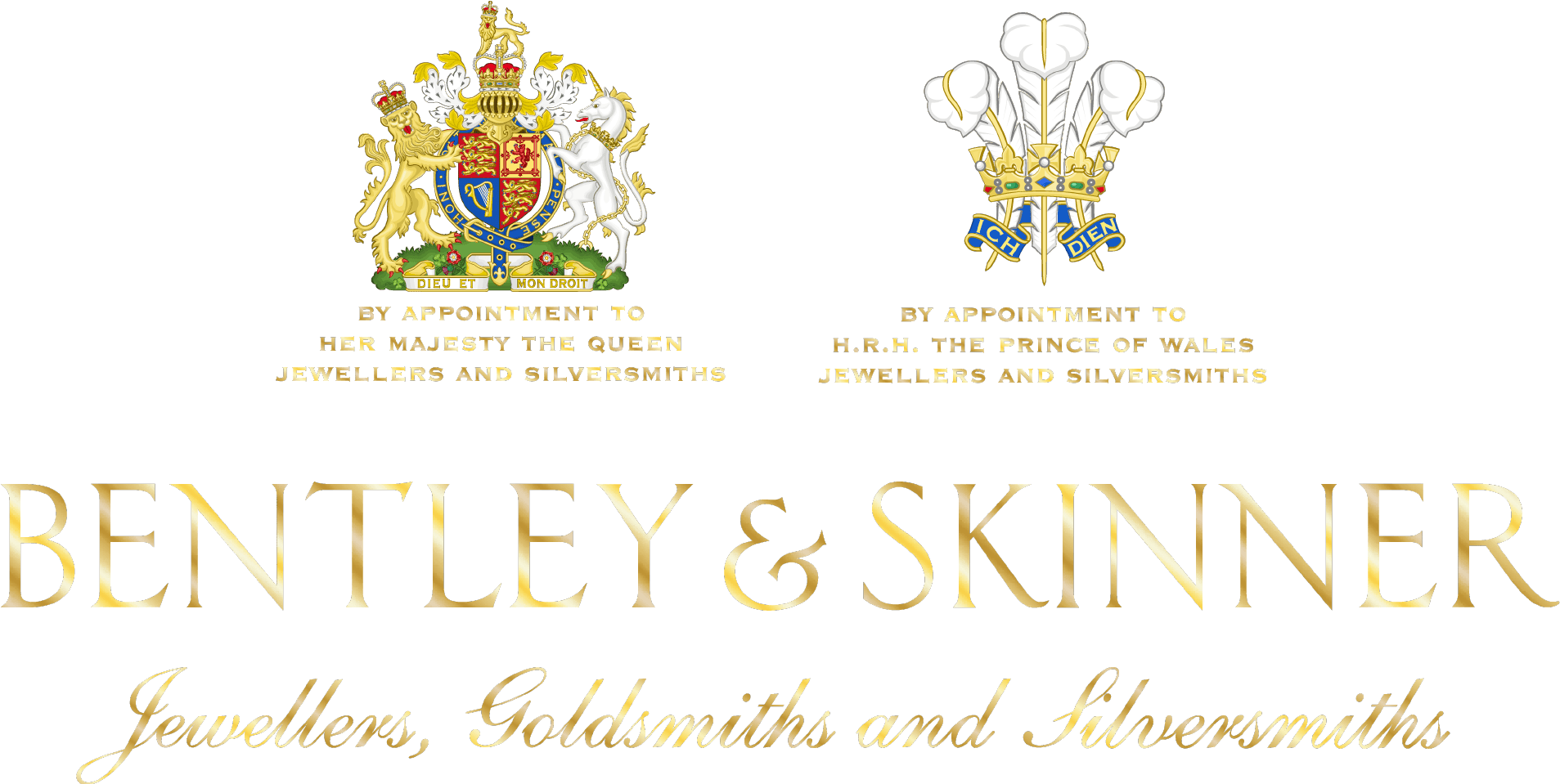


Loading...
Heraldry & Coat Of Arms
Abased, (fr. abaissé): This term is used when a chevron, fesse, or other ordinary, is borne lower than its usual situation. Charges, however, when placed low down in the shield are said to be in base.
Addorsed: Said of two animals turned back-to-back.
Annulet: A ring-shaped device on a shield; hollow roundel
Arg, Argent: The tincture of silver, frequently depicted as white and usually considered interchangeable with it.
Armes Parlantes: arms using devices to illustrate the name of the bearers, such as a rose and a wall to illustrate the name Rosewall.
Armigerous: Being entitled to use a heraldic achievement (e.g., bear arms) either by hereditary right, grant, matriculation, or assumption of arms.
Augmentation: A mark added to an existing coat of arms to commemorate a notable achievement. Freely granted from the time of Charles II to Victoria and can take the form of an extra crest borne to the right of the of the family crest.
Az, Azure: Blue; represented when engraved by parallel horizontal lines.
Battlements: The upper works of a castle or tower.
Base: The lower part of the shield.
Bend: One of the nine ordinaries; it occupies one-third part of the shield or crest and is drawn diagonally from the dexter chief (top right) to the sinister base (bottom left).
Blazon: A formal description of a coat of arms.
Blazonry: The art or process of describing heraldic arms in proper form.
Caboshed: Animal’s head, often stag’s affronty, without a neck.
Cadency: The line of descent from a younger member of a family.
Casque: A helmet.
Canting arms: A coat of arms making visual reference to the surname of its owner.
Chapeau: A cap with ermine lining that was once worn on the helmet before the development of mantling that is sometimes used instead of the wreath to support the crest. In Scotland the chapeau indicates the rank of a feudal baron.
Charge: A design, device, or image depicted on heraldic arms.
Chevron: an inverted V-shaped charge on a shield, one of the earliest ordinaries found in English arms.
Chief: the upper third of a shield.
Cinquefoil: a charge representing a five-petalled flower.
Coat of arms: the heraldic bearings of a person, family, or corporation.
College of arms: any of several institutions in the United Kingdom having a royal charter to deal with matters of heraldry, grant armorial bearings, record, and trace genealogies, etc.
Colours The principle colours are blue (Azure), red (Gules), black (Sable), green (Vert), and purple (Purpure). See also tinctures.
Crest: a symbol of a family or office, usually representing a beast or bird, borne in addition to a coat of arms and used in medieval times to decorate the helmet.
Crosslet: a cross having a smaller cross near the end of each arm.
Damasked: Patterned.
Dexter: of, on, or starting from the right side of a shield from the bearer’s point of view and therefore on the spectator’s left.
Difference: an addition to the arms of a family to represent a younger branch.
Dormant: sleeping with the head resting upon the forepaws.
Embowed: An arm from the shoulder that is bent at the elbow. See Arm.
Emblazon: to describe, portray, or colour (arms) according to the conventions of heraldry.
Engrailed: A term applied to a line composed of semicircular indents.
Erm, Ermine: A white fur interspersed with black spots (known as ermine spots).
Escutcheon: a shield, especially a heraldic one that displays a coat of arms.
Feathers: A plume of feathers are always those of the ostrich, unless mentioned as otherwise.
Fesse or fess: an ordinary consisting of a horizontal band across a shield, conventionally occupying a third of its length and being wider than a bar.
Field: the surface or background, as of a flag, coin, or heraldic shield, on which a design is displayed.
Fillet: a horizontal division of a shield, one quarter of the depth of the chief.
Fusil: a charge shaped like a lengthened lozenge.
Guardant or gardant: (of a beast) shown full face.
Gironny or gyronny: divided into segments from the fesse point.
Gu, Gules: the colour red.
Hand Apaumée: An open hand.
Hand Sinister: A left hand.
Hatchment: a diamond-shaped tablet displaying the coat of arms of a dead person.
Herald: the intermediate rank of heraldic officer, between king-of-arms and pursuivant.
Impale or empale: to charge (a shield) with two coats of arms placed side by side.
Invected The reverse of engrailed, indented with a series of curves pointing inward.
Issuant: Used of beasts or monsters, unless they are winged, when rising.
Inescutcheon: a small shield-shaped charge in the centre of a shield.
King-of-arms: the highest rank of heraldic officer, itself divided into the ranks of Garter, Clarenceaux, and Norroy and Ulster. In Scotland the first is Lyon.
Label: a charge consisting of a horizontal line across the chief of a shield with three or more pendants: the charge of an eldest son.
Lion: a conventionalized lion, the principal beast used as an emblem in heraldry. It has become the national emblem of Great Britain.
Lozenge: a diamond-shaped charge.
Lozengy: divided by diagonal lines to form a lattice.
Lyon King of Arms: the chief herald of Scotland.
Mantling or lambrequin: the drapery or scrollwork around a shield.
Mascle or voided lozenge: a charge consisting of a lozenge with a lozenge-shaped hole in the middle.
Moline: (of a cross) having arms of equal length, forked and curved back at the ends.
Naissant: (of a beast) having only the forepart shown above a horizontal division of a shield.
Nombril: a point on a shield between the fesse point and the lowest point.
Officer of arms: a pursuivant or herald.
Or: the representation of the metal gold: indicated in engravings by small black dots on a white field.
Ordinary: any of several conventional figures, such as the bend, the fesse, and the cross, commonly charged upon shields.
Orle: a border around a shield.
Pale: an ordinary consisting of a vertical stripe, usually in the centre of a shield.
Pall: an ordinary consisting of a Y-shaped bearing.
Parted: showing two coats of arms divided by a vertical central line.
Passant: (of a beast) walking, with the right foreleg raised.
Pile: an ordinary shaped like a wedge, usually displayed point-downwards.
Ppr, Proper: (of heraldic colours) considered correct for the natural colour of the object or emblem depicted.
Purpure: The colour purple.
Quarter: one of four more or less equal quadrants into which a shield may be divided.
Quartering: the marshalling of several coats of arms on one shield, usually representing intermarriages.
Rampant: (of a beast) standing on the hind legs, the right foreleg raised above the left.
Rebus: a heraldic emblem or device that is a pictorial representation of or pun on the name of the bearer.
Roundel: a charge in the shape of a circle.
Sa, Sable: of the colour black.
Saltire: an ordinary consisting of a diagonal cross on a shield.
Shield: a pointed stylized shield used for displaying armorial bearings.
Sinister: of, on, or starting from the left side from the bearer’s point of view and therefore on the spectator’s right.
Statant: (of an animal) in profile with all four feet on the ground.
Sun in splendour: a representation of the sun with rays and a human face.
Supporter: a figure or beast in a coat of arms depicted as holding up the shield.
Torse: a wreath of twisted silks of two alternating tinctures, usually a metal and a colour, depicted supporting a crest or coronet, often upon a helmet.
urdé or urdée: (in heraldry) having points.
Vert: the colour green.
Voided: (of a design) with a hole in the centre of the same shape as the design.
Volant: Heraldic term for flying.
Wreath: a band of flowers or foliage intertwined into a ring, usually placed on a grave as a memorial or worn on the head as a garland or a mark of honour.